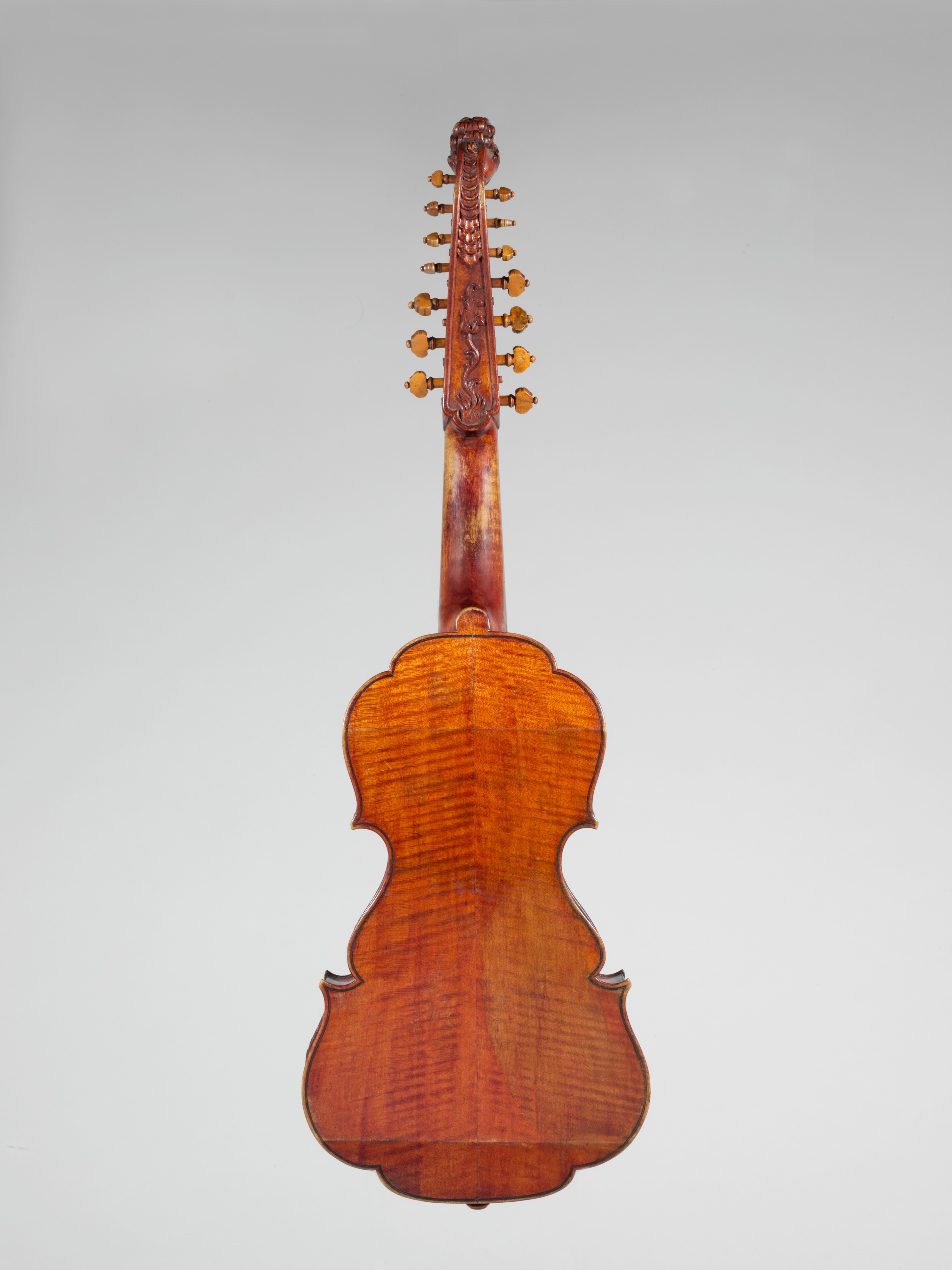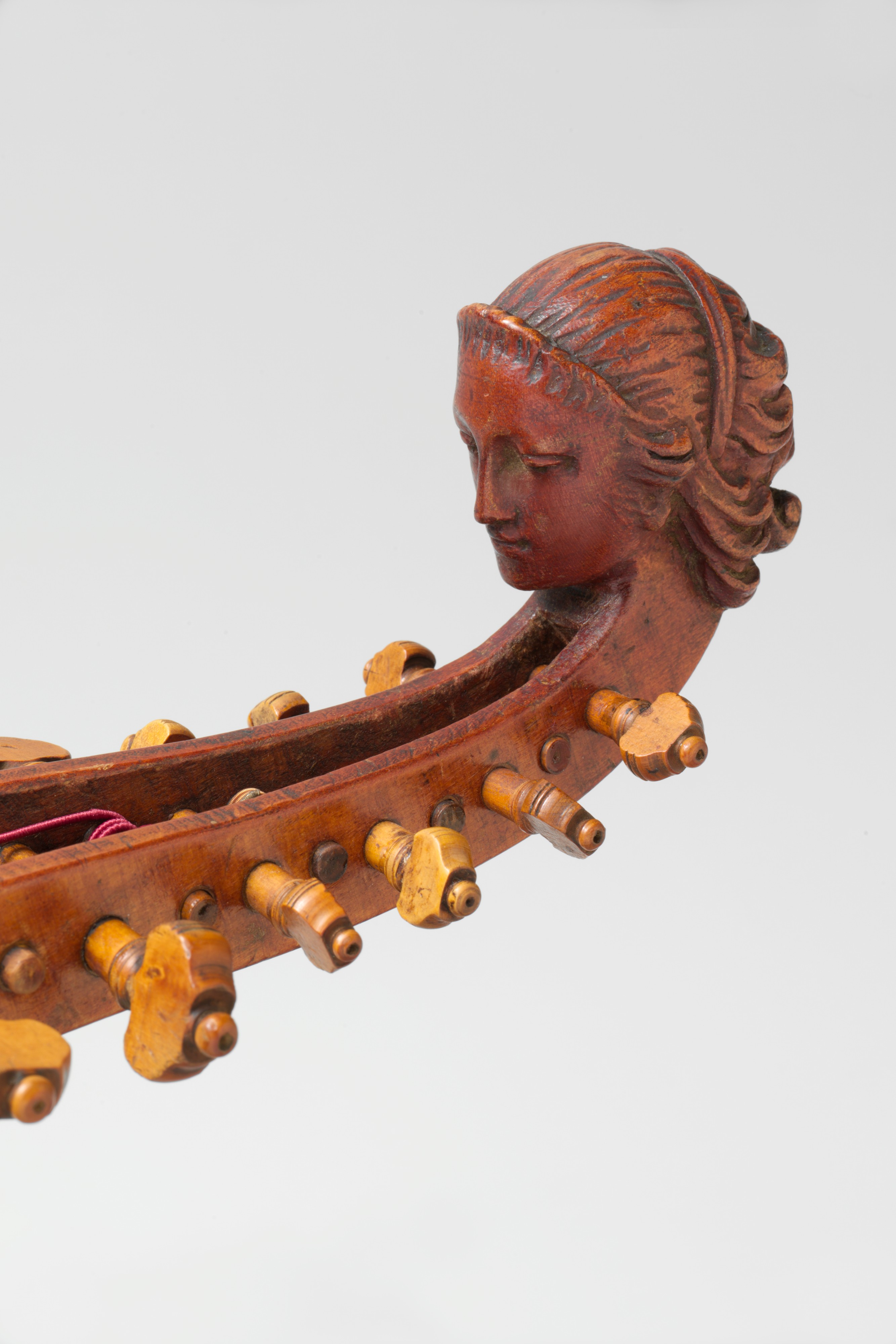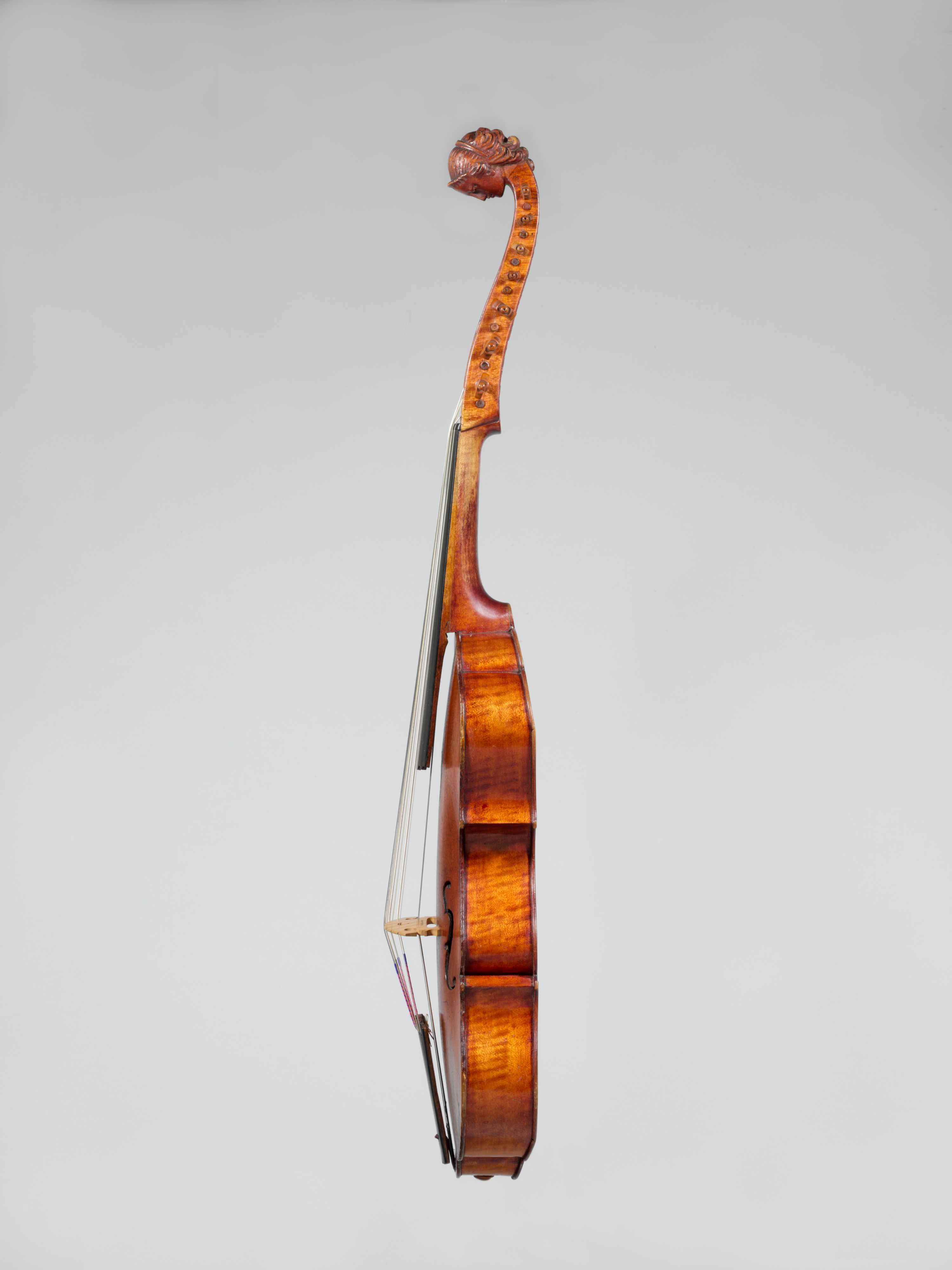Viola d'Amore
Johannes Florenus Guidantus Italian
The viola d'amore, or viola "of love," is a bowed stringed instrument which gained great popularity in the eighteenth century. Much of its history, including the derivation of its name, is unknown. It has many characteristics of the viol family such as a flat back, ribs that are flush with the top and back, and a rosette in addition to soundholes. Yet, like a violin, it is unfretted and held under the chin while played. Violas d'amore typically have seven playing strings, though instruments with other numbers of strings are not unusual. Perhaps the most distinguishable characteristic of the eighteenth-century viola d'amore is the presence of sympathetic strings, which are not played but located behind the bowed strings and vibrate "in sympathy." The sympathetic strings contribute to produce a tone that is clear and often described as "silvery," as well as creating a more resonant sound with a longer decay. Sympathetic strings are found on several European folk instruments, including the Swedish nyckelharpa and the Norwegian hardanger fiddle. They are prevalent on stringed instruments from India, most notably the sitar. The viola d'amore was popular with eighteenth-century composers and can be found in the works of J. S. Bach, Vivaldi, Telemann, Haydn, and Locatelli.
This beautiful example has a festooned body with a top of spruce and back and sides of maple. The soundholes are unusually shaped, but echo and accentuate the unusual outline of the body. A parchment rose punctures the body just below the fingerboard. The finial of the instrument is decorated with a carving of a young girl with her head down and eyes closed depicting the idea that "love is blind."
Due to rights restrictions, this image cannot be enlarged, viewed at full screen, or downloaded.
This artwork is meant to be viewed from right to left. Scroll left to view more.








